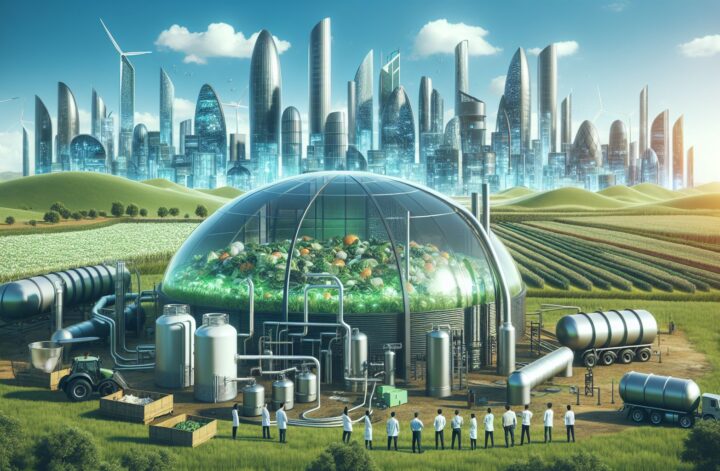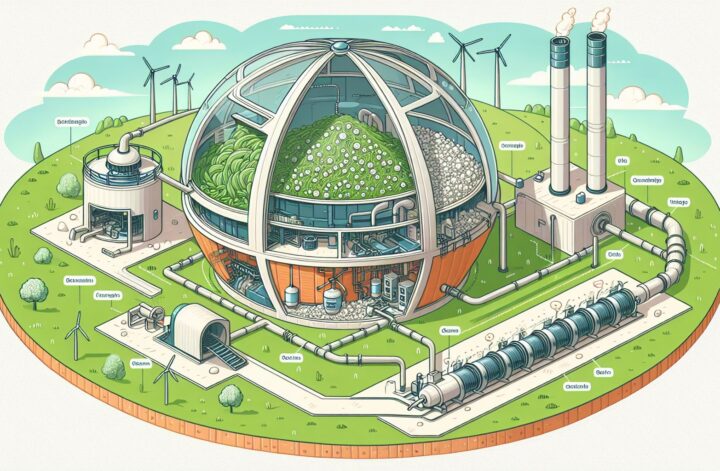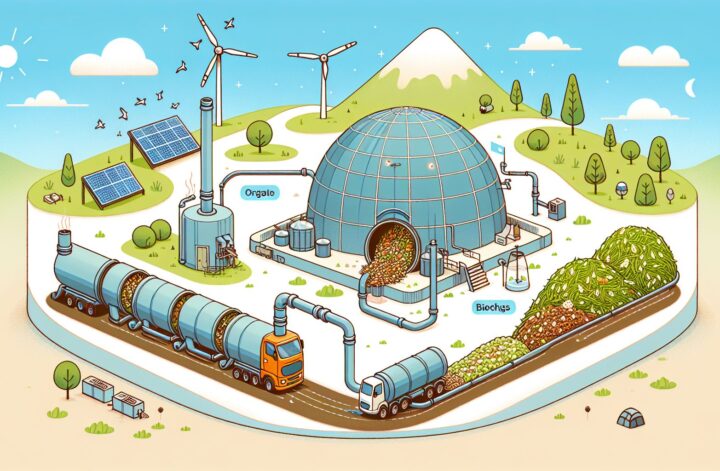Energy is the lifeblood of modern society, fueling everything from our homes and businesses to our cars. However, the traditional sources of energy that we currently rely on, such as oil, gas, and coal, are not sustainable in the long-term. Not only are they finite resources, but their extraction and use also contribute to environmental problems like global warming and air pollution.
With the multiple challenges posed by climate change and increasing energy demand, alternative and renewable energy resources are gaining importance. Among the various solutions, biogas production stands out as a promising option.
Introduction to Biogas
Biogas is a type of biofuel that is naturally produced during the breakdown of organic material in an oxygen-free environment – a process known as anaerobic digestion. The main components of biogas are methane (55 to 65%) and carbon dioxide (30 to 40%), with small amounts of other gases like hydrogen and nitrogen. Thanks to the high methane content, biogas can be used directly for heating, electricity generation, or as a vehicle fuel after upgrading[^1^].
The Biogas Production Process
Anaerobic Digestion (AD), the biological process by which biogas is produced, is typically divided into four steps: hydrolysis, acidogenesis, acetogenesis, and methanogenesis.
-
Hydrolysis: Organic matter is broken down into simpler molecules by enzymes.
-
Acidogenesis: Bacteria convert the simpler molecules into volatile fatty acids.
-
Acetogenesis: Bacteria convert these volatile fatty acids into acetates.
-
Methanogenesis: Methane-producing microbes, known as methanogens, convert acetates into biogas.
During the AD process, specific operating conditions such as temperature, pH level, hydraulic retention time (HRT), and solid retention time (SRT) are crucial in maintaining the stability of the process and therefore the biogas yield[^1^].
Benefits of Biogas
Biogas production comes with a variety of benefits that make it an attractive energy source:
-
Renewability: Unlike fossil fuels, biogas is a renewable energy source, created from organic waste material that is constantly being produced.
-
Waste Reduction: Biogas production reduces the amount of organic waste that would otherwise be discarded in the landfill, contributing to waste management solutions.
-
Greenhouse Gas Emission Reduction: Methane, a potent greenhouse gas, is the primary component of biogas. Its capture and conversion to energy helps reduce the overall emissions of greenhouse gases[^2^].
-
Energy Security: Using biogas reduces reliance on foreign energy sources and contributes to domestic energy supply.
-
Job Creation: The biogas industry can create jobs, from the collection and processing of feedstock to the management of biogas plants.
Co-digestion and Biogas Upgrading
Co-digestion, the practice of adding different types of feedstocks to the digester, can increase biogas production by ensuring a balanced diet for the microbes in the digester. Typical co-digestion materials include food waste, plant-based waste, and livestock manure[^3^].
After the production, biogas often undergoes upgrading – the process of removing impurities and increasing the methane content to be suitable for specific uses like natural gas replacement or vehicle fuel[^1^].
The Future of Biogas Production
The potential of biogas production is immense. However, to reach this potential, sustained research, supportive legislation, and increased public awareness are needed.
In particular, advancements in anaerobic digester design, including the adoption of high-rate anaerobic digestion systems, can increase the efficiency and yield of biogas production.
Moreover, continued studies on anaerobic digestion microbiology, trace element supplementation, and inhibition factors like ammonia and sulfide toxicity can lead to a better understanding of the AD process and thus further increase the feasibility of biogas as a mainstream energy source.
Biogas production, with its multiple environmental and socio-economic benefits, provides a practical solution to several of the challenges we face today – from environmental conservation, waste management, and renewable energy to job creation and energy security. Embracing biogas not only helps us transition to a more sustainable energy future but also offers opportunities for innovation, growth, and development in the 21st century.
[^1^]: “Biogas – A Renewable Biofuel”, US Department of Energy, Link
[^2^]: “Climate and Health Benefits of Anaerobic Digestion”, Environmental Defense Fund, Link
[^3^]: “Co-digestion”, Environmental Protection Agency, Link




